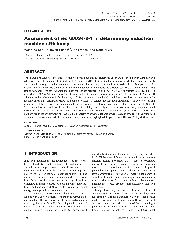摘要
This paper evaluates the efficiency of induction machines and measurement uncertainties arising from applying two editions of the International Electrotechnical Commission (IEC) testing standard in industry. Machine testing standards vary in methodology, procedure and required instrumentation accuracy, therefore leading to significant discrepancies in the experimentally determined efficiency for the same induction machine tested to different standards as well as by different testing personnel. Five new induction machines with ratings between 7.5 and 150 kW are carefully tested using IEC 60034-2 (old edition), 60034-2-1 (new edition) and Institute of Electrical and Electronics Engineers (IEEE) standard 112 method B which is used as a benchmark. Furthermore, a 30 kW calorimeter is employed to validate power loss measurements and a realistic uncertainty estimation (RUE) is adopted to assess associated measurement uncertainties in power losses and efficiency, and then to assess the standard methods. Experimental results and uncertainty analysis confirm that IEC 60034-2-1 standard has improved over its previous version in defining a set of higher instrumentation accuracy, a more detailed testing procedure and more accurate models for core loss and particularly stray load loss (SLL). Overall, calorimetric methods justify the effectiveness of IEC 60034-2-1 in terms of providing reliable power losses and efficiency. Finally the need for a unified international induction machine testing standard is highlighted.
- 出版日期2011-1
- 单位浙江大学
